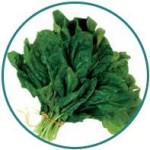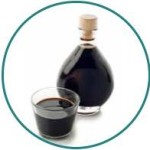Top 7 Best Testosterone Boosting Foods
The proper, healthy Man Diet is absolutely key to not only good, sustainable health and longevity, but also to maintaining a viably productive and powerful testosterone level. And we say Man, because the nutritional facts are that we males require a distinctly differing amount of similar foods than the fairer sex, while also requiring a differing variety of the best testosterone boosting foods for our optimal testosterone health. Top 7 Best Testosterone Boosting FoodsOf course our Top 7 Superfoods and testosterone boosting foods are healthy and nutritious for everyone, but men in particular should pay special attention. Introduce these foods to your diet regimen, and you’ll feel the results right away.Garlic
This Old School herb and Paleo-Superfood is perhaps one of the healthiest overall ingredients you can add to any diet regimen. Excellent as an immune system booster, garlic is an all-natural additive that has been shown to boost testosterone levels. In addition to its many health benefits, garlic is just plain delicious!Pills and powders are OK, but eating real garlic is best.Coconuts
A key source of healthy monounsaturated fats, the delicious coconut will help boost your testosterone levels without packing on the blubber. In addition, you need not worry over any negative cardiovascular effects from this hard-shelled, hairy nutrition monster. In smoothies, with desserts, in milks, coconuts are a reliable testosterone booster.And don’t forget coconut oil as a cooking additive!Avocados
A very simple equation is less cholesterol equals more testosterone, and the awesome avocado is a full of cholesterol-busting good fats that will allow the testosterone to grow, as well keep your arteries in good working order.Grapes
Grape skins are loaded with all-important resveratrol (a plant-based polyphenol), which plays a crucial role in overall sperm health and motility with a corresponding increase in Testosterone levels. In addition, emerging research is finding that resveratrol, taken in large amounts, just may be a longevity super-additive. So eat grapes and live longer and healthier.Red Meat
A very simple equation is less cholesterol equals more testosterone, and the awesome avocado is a full of cholesterol-busting good fats that will allow the testosterone to grow, as well keep your arteries in good working order.Honey
An excellent sugar substitute, honey is loaded with nitric oxide and boron, an important testosterone boosting mineral. Nitric Oxide is the key ingredient to many ED drugs as it dilates the blood vessels and promotes better blood flow for an erection.Eggs
As we previously mentioned, the Omega-3 rich egg is also a protein powerhouse and a sure testosterone firecracker!Here is one extra one that doesn’t boost testosterone but helps you manage your Estrogen levels!!Cabbage is rich in indole-3-carbinol, a metabolic chemical that effectively flushes any floating estrogen from your system and as a result, lets your testosterone run wild. It doesn’t matter if your tastes run to kimchi or corned beef and cabbage. Just get that leafy goodness in you!Contact Us
If you’re ready to increase your testosterone levels, contact us today to schedule a free consultation.Top 7 Best Testosterone Boosting Foods
Hormone Therapeutics April 18th, 2023
Posted In: Health & Wellness, Testosterone Therapy
Tags: arteries, avocados, coconuts, diet, ED, eggs, erection, garlic, grapes, honey, indole-3-carbinol, lean, monounsaturated fat, muscle, natural testosterone therapy, nitric oxide, Omega-3, paleo, polyphenol, red meat, resveratrol, superfoods, testosterone, testosterone boosting foods, testosterone diet, testosterone foods
Enhance Your T Levels with this Testosterone Boosting Diet
 A Sample of Testosterone Boosting Diet
A Sample of Testosterone Boosting Diet
Diet plays a huge role in testosterone production. Our organs and glands need specific minerals like zinc and magnesium for the initiation of testosterone production. The Leydig cells require cholesterol to fuel the production of testosterone. Adding testosterone boosting foods like broccoli, cauliflower, and cabbage will also assist in one’s testosterone levels as well as Testosterone : Estrogen ratio by flushing estrogens from the body that lower our testosterone levels.
Increasing fat and cholesterol in-take also helps boost testosterone production. That’s the origin of the Rocky training on raw eggs myth. Loading up on bacon, eggs, nuts and steak certainly has its detractors as does increasing cholesterol consumption but this is all about testosterone boosting diet.
Here’s an example of one man’s journey to boost his testosterone through his own “testosterone boosting diet” that saw a dramatic increase by testosterone optimizing his diet, exercise and sleep (this is not what we are recommending but an example):
Testosterone Boosting Diet Sample Meal Plan
Breakfast:
Bacon and Eggs . . and more bacon . . and more eggs
Weekdays: Three slices of bacon and three whole eggs. This provided the fats and cholesterol the body needs to make testosterone. Beware nitrates if you eat this much bacon and consider nitrate-free bacon.
Weekends: Mexican Breakfast burritos or pancakes.
Lunch:
The Man Salad
A properly prepared Man Salad packs as many Testosterone boosting foods as he could find:
 Spinach/Spring Salad Mix
Spinach/Spring Salad Mix
The salad base using organic greens. Spinach and other leafy green vegetables contain minerals like magnesium and zinc, which have been shown to aid in testosterone production
 Meat
Meat
Beef provides our bodies with the protein needed to create muscle and the fats and cholesterol to make testosterone. His philosophy was the fattier, the better.
 Nuts
Nuts
A handful of almonds, Brazil nuts or walnuts. Nuts are fat bombs providing cholesterol for the Leydig cells need for T production.
 Avocado/Olives
Avocado/Olives
Avocados and olives provide the good fats needed for healthy testosterone production.
 Broccoli
Broccoli
Broccoli contains high levels of indoles. This compound reduces bad estrogen that hurt testosterone levels.
 Olive Oil
Olive Oil
Olive oil helps Leydig cells (which produce testosterone) absorb cholesterol better which assists in testosterone production. More cholesterol absorption = more testosterone.
 Balsamic Vinegar
Balsamic Vinegar
Mostly for taste and to help keep your insulin in check.
Testosterone Boosting Diet: Snacks

During the day he snacked on testosterone-healthy foods like nuts, pumpkin seeds, and broccoli and occasionally dark chocolate.
An added testosterone benefit to a high fat diet with balanced protein and carbs is can help shed some body fat (this man went from 18% to 12% body fat). Studies show that high fat diets actually contribute to increased body fat loss. And as we discussed earlier, as you lose body fat, your T production ramps up. Remember that this is not a long term solution but one man’s 90 day example.
 Dinner
Dinner
Whatever (in moderation)
He ate what the family was having: chili, chicken and rice, enchiladas, etc. He was not overly worried about carbs but watched his portions.
Results
This man doubled his Total Testosterone levels over 120 days but was doing so many healthy things in addition to the testosterone boosting diet. The diet was not unconventional with the exception of the fat and cholesterol intake. He didn’t follow a strict low-carb or Paleo diet. Research is showing that high protein, low carb diets can decrease testosterone levels.
Cholesterol Levels from this approach
His full lipid screening showed the following 90 days on the testosterone boosting diet:
Total Cholesterol: 202 mg/dL (Optimal range: < 200 mg/dL.)
HDL Cholesterol (“Good” Cholesterol): 77 mg/dL (Optimal range: > 60 mg/dL)
LDL Cholesterol (“Bad” Cholesterol): 112 mg/dL (Optimal range: 100-129 mg/dL.)
Triglycerides: 65 mg/dL (< 150 mg/dL is considered normal; < 100 mg/dL is optimal)
By the raw numbers, his overall lipid screening was good despite the high total cholesterol. His results were more interesting when examining the ratios doctors look at for heart disease risk.
Total cholesterol/HDL Ratio: 2.6:1 (Normal < 5:1; Optimal < 3.5:1)
LDL/HDL Ratio: .68:1 (Normal > .3:1; Optimal .4:1.)
Triglycerides/HDL Ratio:
.84:1 (Optimal < 2:1)
Despite gorging on bacon, eggs, whole milk, and steak for four months, he still had healthy cholesterol levels.
Hormone Therapeutics aims to help people looking to improve and optimize their health through natural means or through the guidance of our physicians.
Don’t miss out our free weekly tips and news on Low T, hormone balancing, healthy living, nutrition and a lot more.
Want more?

Sign up today and Get our ebook, ‘Naturally Increase Your Testosterone Levels’ absolutely FREE.
Enhance Your T Levels with this Testosterone Boosting Diet
Saleamp Design November 8th, 2016
Posted In: Testosterone Therapy
Tags: avocado, bacon, beef, broccoli, caveman, cholesterol, diet, eggs, estradiol, HDL, LDL, Leydig cells, Lipid, low carb, nuts, olives, paleo, protein, ratio, spinach, steak, testosterone boosting diet, testosterone diet, testosterone level, triglycerides, whole milk


 A Sample of Testosterone Boosting Diet
A Sample of Testosterone Boosting Diet
 Dinner
Dinner